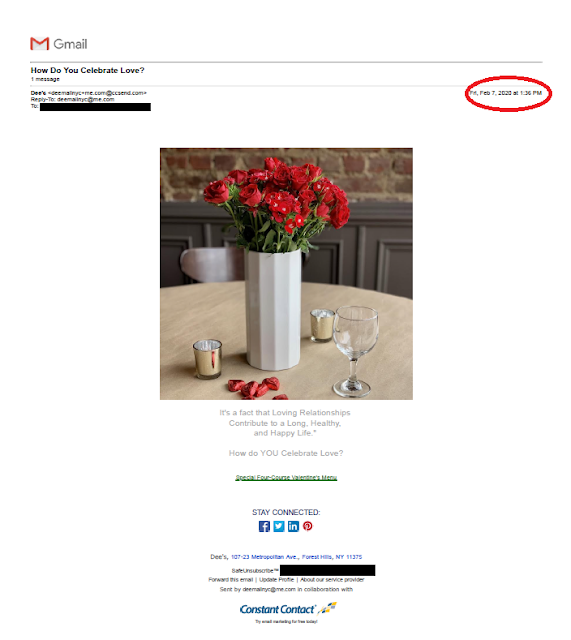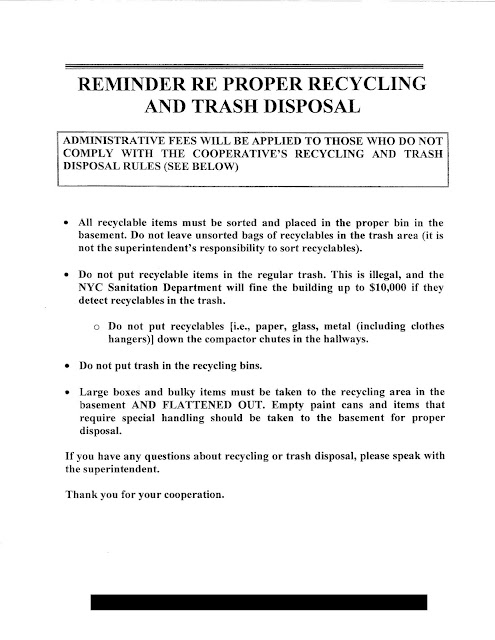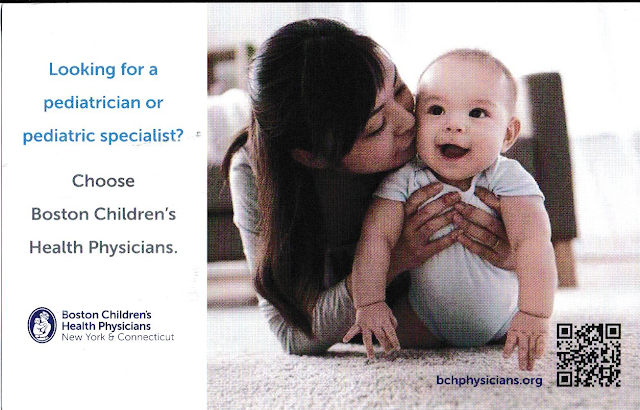 |
| Mommy is happy with her healthy baby. |
The front of the postcard simply suggests that I choose Bost Children's Health Physicians. It doesn't suggest why I choose one of their doctors. What makes their physicians desirable? To put it in marketing terms, what is BCHP's unique selling proposition?
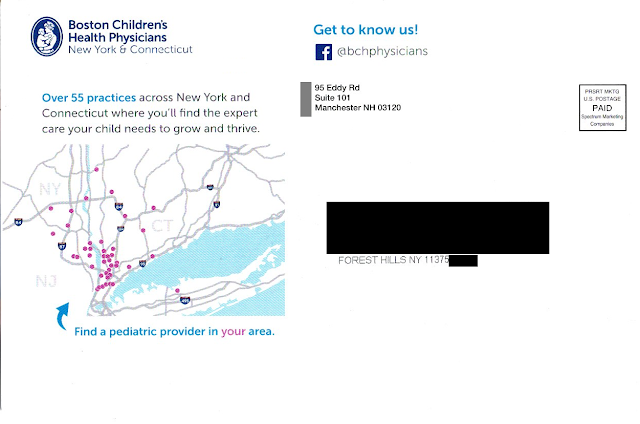 |
| Where is Forest Hills, Queens? Not in the area shown on the postcard. |
Buried on the bottom right corner of the picture of mom and her smiling baby is a URL leading to the Boston Children’s Health Physicians home page. Somewhere on that home page is information that supports the postcard’s messaging, but it isn’t easy to find. The QR code doesn’t lead to the same page as the URL; it leads directly to the practice locator page. And the placement of the QR code (within an image on the opposite side) is a Fail for Creative.
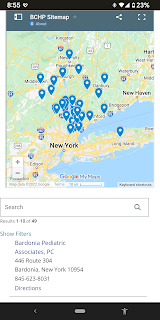 |
| BCHP locations not quite near Queens |
As the crow flies, the distance from Forest Hills, Queens, NY to Bardonia is about 27 miles. As the parent drives in traffic, however, it is two toll bridges and typically an hour drive or longer with a sick or tired child in the back seat. (That assumes the parent has a car. After all, this is New York City.) This long distance to a physician confirms that the postcard was poorly targeted geographically – another Fail for Targeting.
Returning to the caption below the map, what is a “pediatric provider?” Why use that kind of industry jargon when the front of the postcard uses “pediatrician” and “pediatric specialist” while the address side of the postcard cites having 55 “practices”? Why throw yet another term out there? I realize I’m not a parent but, if I were, wouldn’t I want to find a “doctor” for my child?
Finally, unless there is a back-end method in place for tracking response to the individuals being mailed, this isn’t direct marketing – it’s mailed advertising.
Lessons:
- Vet your data sources to target matching demographics.
- Just being available is not enough. Even a medical practice needs a differentiator.
- The means of following through on a Call to Action should be located close to the Call to Action, and easy to find.
- Vet your physical targeting to people who can easily get to your physical business or medical practice.
- If your Call to Action includes a web site, don’t just list a home page. Use a direct URL that aligns with the Call to Action.
- Apply jargon consistently using terms your customers understand.
- Even a postcard for a medical practice should include some method of tracking results.







